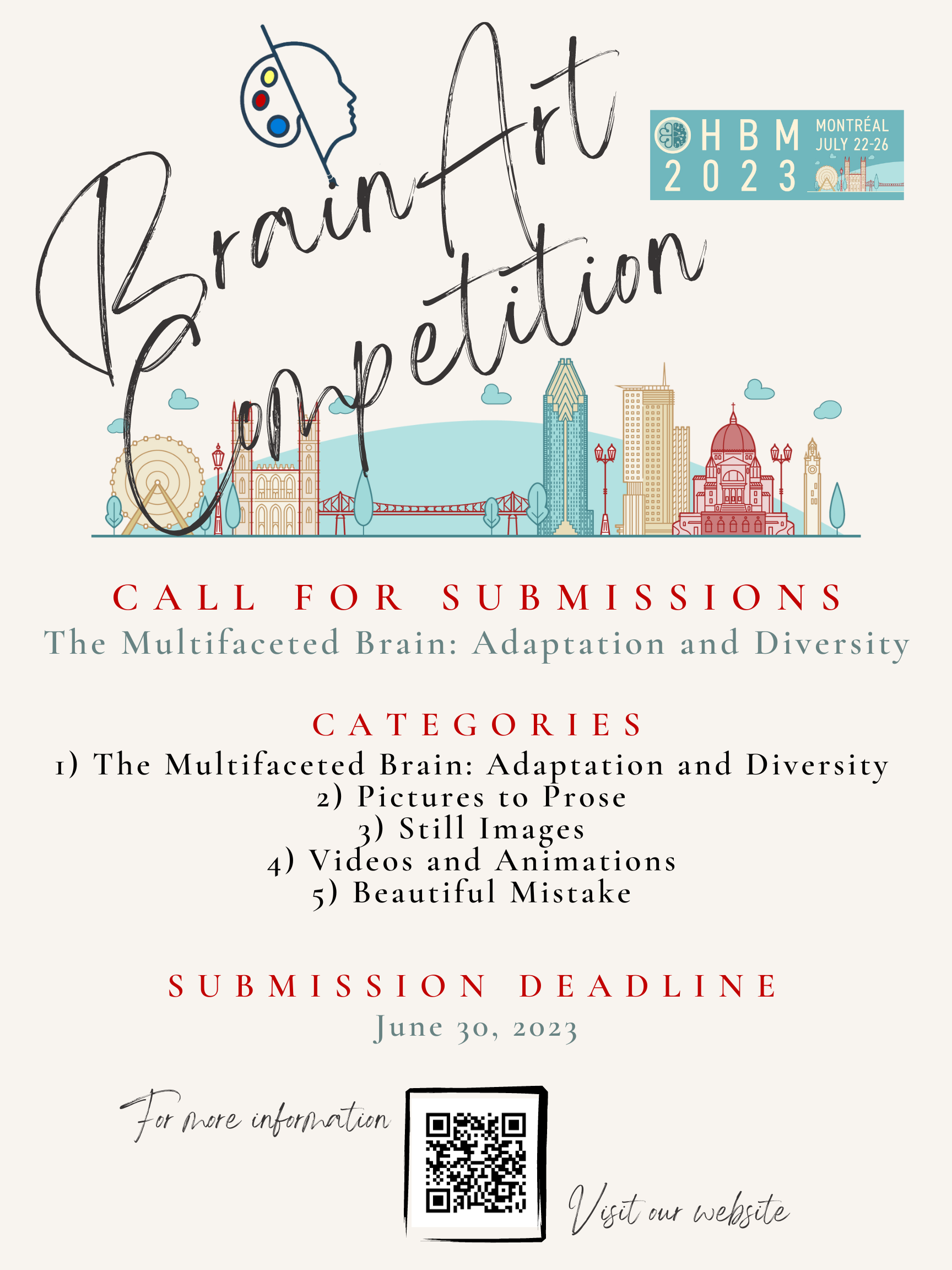2023 BrainArt Competition
The Multifaceted Brain: Adaptation and Diversity
This year we are holding a BrainArt Competition under the theme "The Multifaceted Brain: Adaptation and Diversity". Please take a look at the submission gallery and vote for your favorite artwork here.
Artwork submission deadline: June 30, 2023 July 10, 2023
Vote deadline: July 25 11:59pm EST, 2023
We accept submissions across the following five categories:
1) The Multifaceted Brain: Adaptation and Diversity -- see below.
2) Pictures to Prose e.g. a poem, short story etc. about the brain
3) Still Images e.g. brain art related images such as drawings, photos, paintings, etc.
4) Videos and Animations e.g. brain art related audio-visual and animation contributions
5) Beautiful Mistake e.g. artifact, bug, or failed (visualization) attempt. etc.
We invite artists to explore the topic within one of three axes under the special theme "The Multifaceted Brain: Adaptation and Diversity":
Axis I. Adaptation and diversity across cultures Human infants are born with the ability to discriminate between speech sounds of different languages. Eventually our brains become specialized to the sound we hear the most - our native tongue. As neural pathways corresponding to native phonemes are strengthened, those responding to foreign sounds are pruned. Similarly, sustained exposure to a set of cultural experiences, religious or spiritual practices and political beliefs will affect the brain's structure and function. In other words, the inputs that our brains receive shape how we experience the world around us. The first axis captures diversity across cultures, languages and belief systems. We dedicate it to the artists' interpretations whether they chose to portray the personal hardship experienced by different cultural, ethnic, and socioeconomic groups or consider reconciliation through appreciation of the many diverse expressions and experiences of global communities.
Axis II. Diversity of human sexuality The human central nervous system is extremely complex with multiple levels of organisation that scientists study in specialised subfields from the molecular to the behavioural. The brains and spines of biological males and females are largely indistinguishable from each other but certain aspects are clearly dimorphic between the sexes: e.g., sex-specific behaviours and physiological responses (e.g. age-by-sex responses to oxytocin, etc.) resulting from different neuronal circuits and unique hormonal secretions. Some of these differences seem to be genetically driven while others likely result from environmental and cultural immersion. We invite artists to explore the biological, psychological, social or political aspects of either the similarities or the differences between the sexes. Although less is known about the neural correlates of gender identity and sexual orientation, artists may choose to examine these aspects as well.
Axis III. Neurodiversity A negative connotation is often attributed to the concept of neurodiversity, as a condition of “deficit”. However, diversity is present even in the absence of a disorder: there is significant variation among individuals in traits such as emotion regulation, introversion - extroversion, or tolerance to uncertainty. Moreover, research has shown that neurodiverse individuals, with, for example, autism spectrum disorders, attention-deficit/hyperactivity disorder (ADHD), social anxiety, or dyslexia, can have above average skills in areas like pattern recognition, mathematics, or memory. Pioneering companies are recognizing that neurodiversity represents opportunities and have started to seek out “neurodiverse” talent. In the third axis, we invite artists to explore the hidden strengths of neurodiversity, such as innovations stemming from different ways of perceiving and engaging with the world or problem solving through creative thinking and alternative perspectives.
